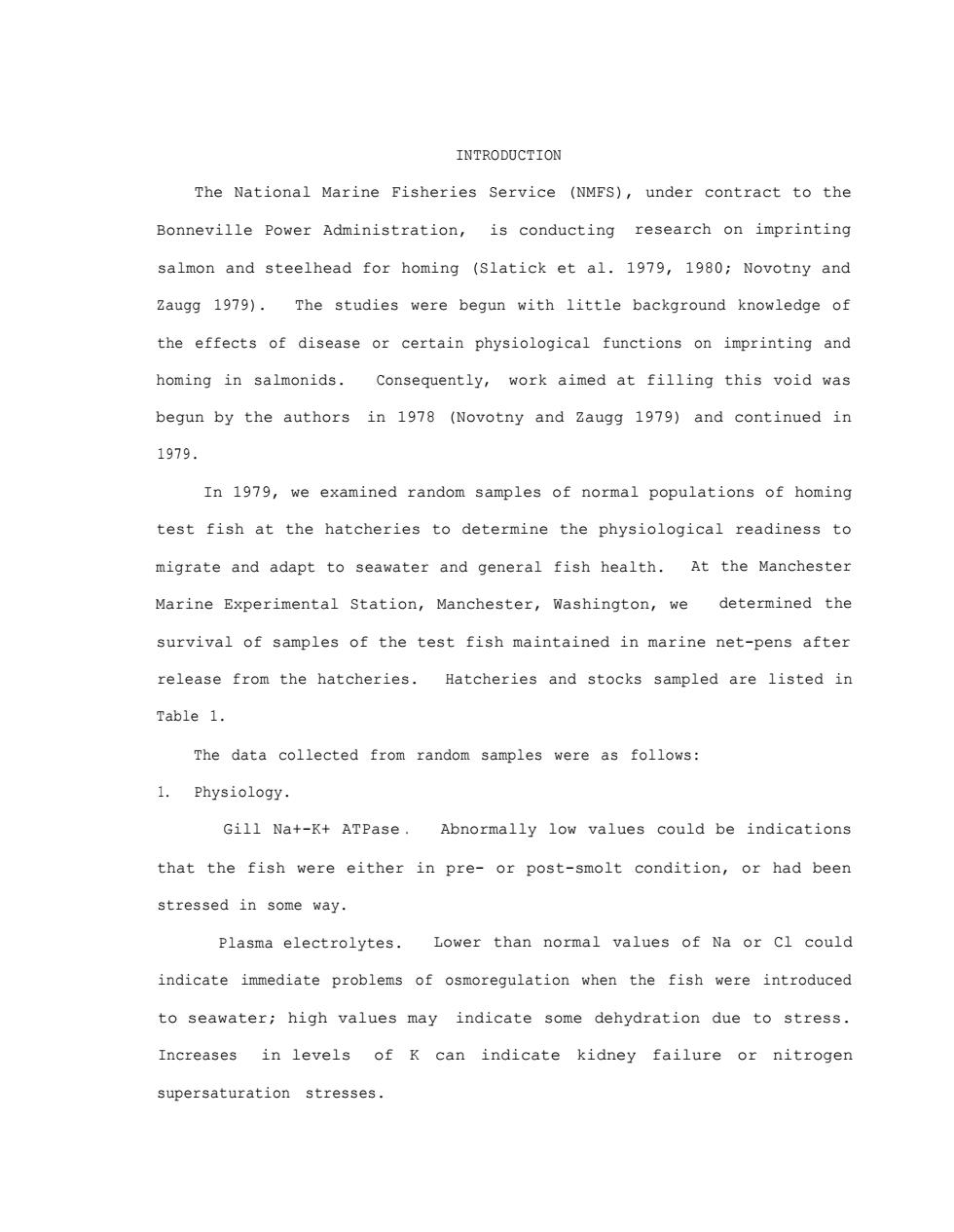正在加载图片...

INTRODUCTION The National Marine Fisheries Service (NMFS),under contract to the Bonneville Power Administration,is conducting research on imprinting salmon and steelhead for homing (Slatick et al.1979,1980;Novotny and Zaugg 1979).The studies were begun with little background knowledge of the effects of disease or certain physiological functions on imprinting and homing in salmonids.Consequently,work aimed at filling this void was begun by the authors in 1978 (Novotny and Zaugg 1979)and continued in 1979. In 1979,we examined random samples of normal populations of homing test fish at the hatcheries to determine the physiological readiness to migrate and adapt to seawater and general fish health.At the Manchester Marine Experimental Station,Manchester,Washington,we determined the survival of samples of the test fish maintained in marine net-pens after release from the hatcheries.Hatcheries and stocks sampled are listed in Table 1. The data collected from random samples were as follows: 1.Physiology. Gill Na+-K+ATPase.Abnormally low values could be indications that the fish were either in pre-or post-smolt condition,or had been stressed in some way. Plasma electrolytes.Lower than normal values of Na or cl could indicate immediate problems of osmoregulation when the fish were introduced to seawater;high values may indicate some dehydration due to stress. Increases in levels of K can indicate kidney failure or nitrogen supersaturation stresses. INTRODUCTION The National Marine Fisheries Service (NMFS), under contract to the Bonneville Power Administration, is conducting research on imprinting salmon and steelhead for homing (Slatick et al. 1979, 1980; Novotny and Zaugg 1979). The studies were begun with little background knowledge of the effects of disease or certain physiological functions on imprinting and homing in salmonids. Consequently, work aimed at filling this void was begun by the authors in 1978 (Novotny and Zaugg 1979) and continued in 1979. In 1979, we examined random samples of normal populations of homing test fish at the hatcheries to determine the physiological readiness to migrate and adapt to seawater and general fish health. At the Manchester Marine Experimental Station, Manchester, Washington, we determined the survival of samples of the test fish maintained in marine net-pens after release from the hatcheries. Hatcheries and stocks sampled are listed in Table 1. The data collected from random samples were as follows: 1. Physiology. Gill Na+-K+ ATPase . Abnormally low values could be indications that the fish were either in pre- or post-smolt condition, or had been stressed in some way. Plasma electrolytes. Lower than normal values of Na or Cl could indicate immediate problems of osmoregulation when the fish were introduced to seawater; high values may indicate some dehydration due to stress. Increases in levels of K can indicate kidney failure or nitrogen supersaturation stresses